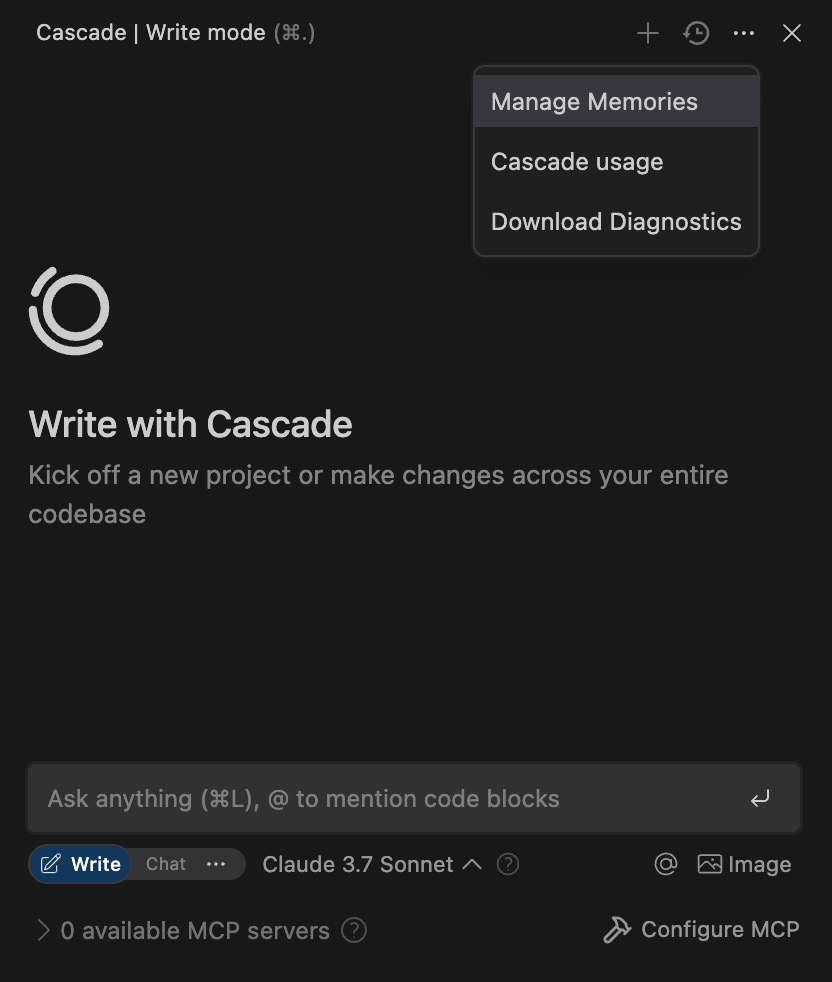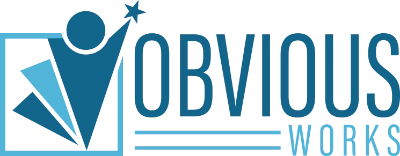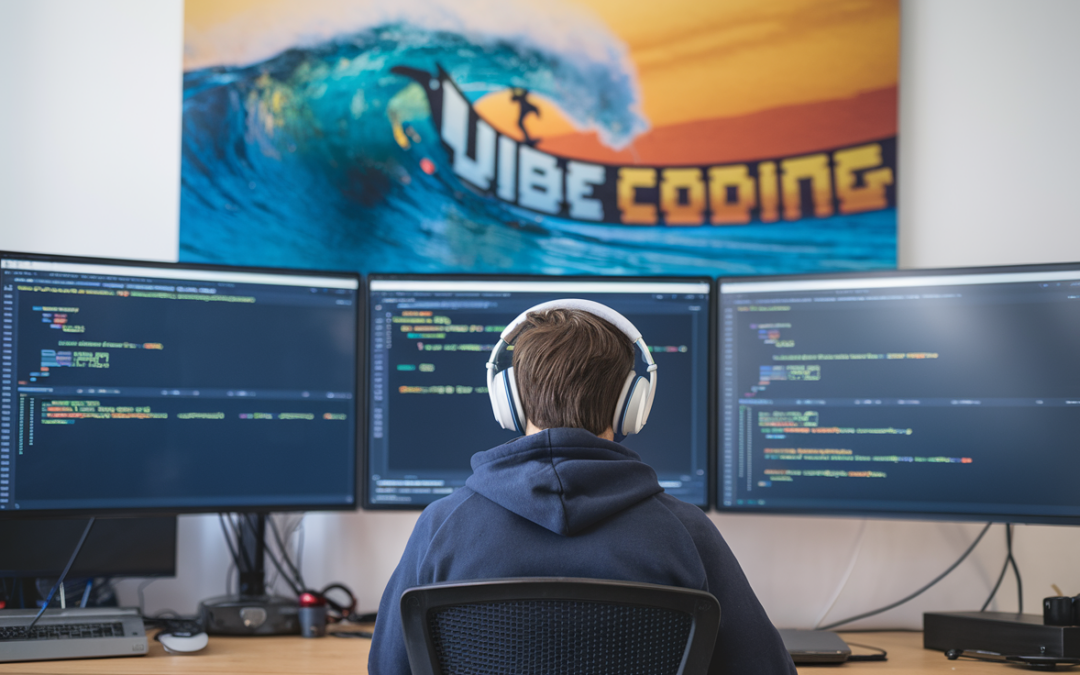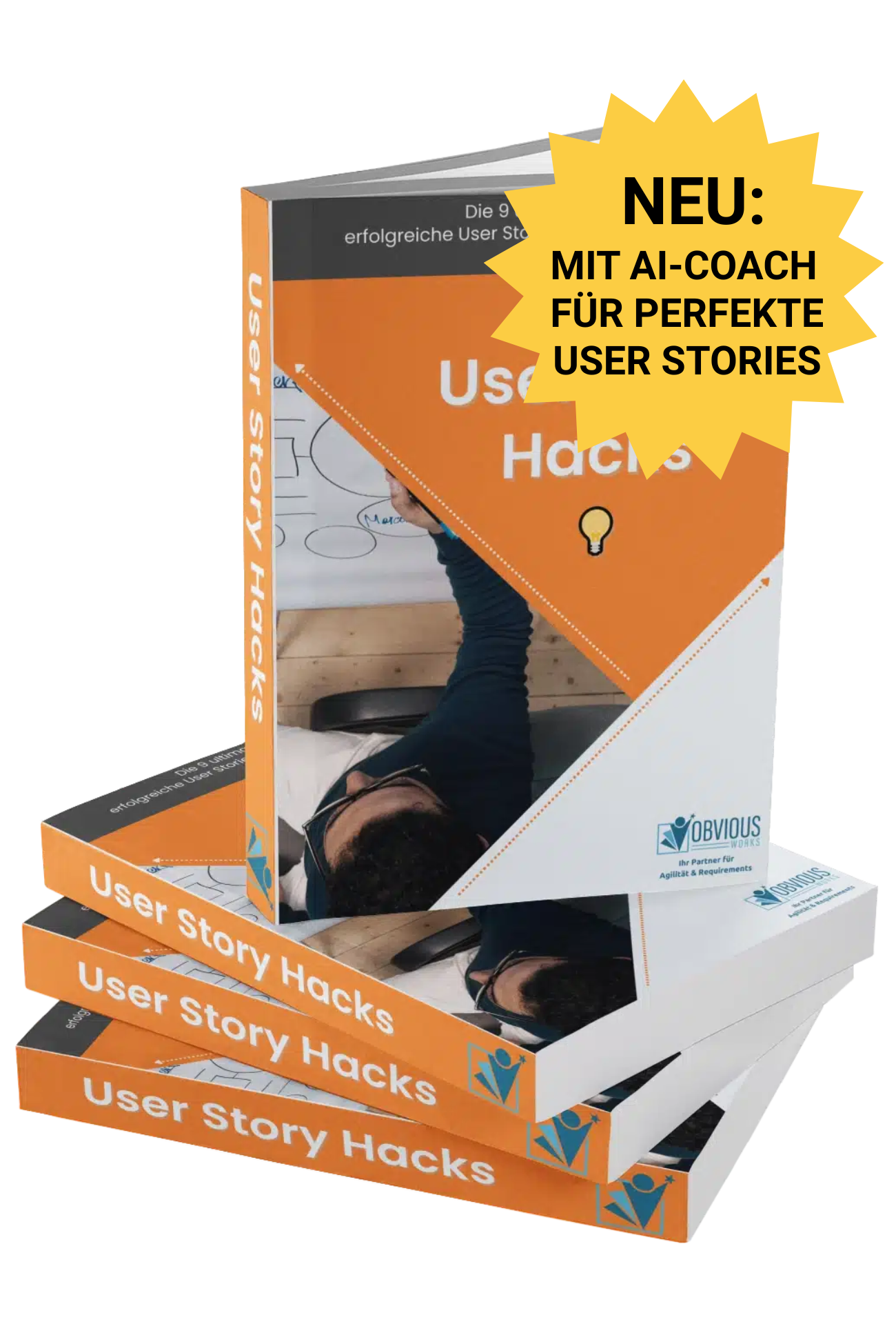What is Vibe Coding and how does it revolutionize your software development?
A decisive principle now applies in modern software development: Context is king! This insight forms the basis for a revolutionary approach that has become known as "vibe coding".
Vibe Coding stands for a transformative way of programming, where you and AI assistants work together in a symbiotic relationship. This innovative approach allows you to focus on creative and strategic aspects, while AI-powered tools like WindSurf or Cursor take care of the repetitive implementation details.
The term "vibe" describes the natural rhythm and harmony between your human intention and the AI execution. Similar to musicians who "vibe" with each other, a flowing, productive workflow is created between you and your AI assistant. The context - i.e. your understanding of the requirements, architecture and framework conditions - is the decisive factor for successful results.
If you configure and use your tools correctly, modern AI-supported IDEs such as WindSurf or Cursor 80%-90% of your coding tasks to AI agents - and this trend will only increase in the future!
In this article, we focus on the AI IDE Windsurf with its powerful Cascade Coding Agent. You can find more information here: https://codeium.com/windsurf
Would you like to learn the finer points of efficient vibe coding yourself?
Then our AI Developer Bootcamp exactly your thing. Specially designed for software developers, we show you how to work more productively, creatively and strategically with AI tools such as WindSurf & Co. No theory blah-blah - just pure practice.
👉 More information and registration: AI Developer Bootcamp
Programming yesterday and today: The evolution of your software development
Traditional programming: manual coding and its limitations
As a programmer, you used to spend countless hours writing every line of code manually. This process was not only time-consuming, but also error-prone. Even with tools like code completion and snippets, the main burden of implementation was on you.
Manual coding posed several challenges:
- High time expenditure for the implementation of basic functions
- Consistency problems for larger codebases and teams
- Difficulty in complying with standards and best practices
- Cognitive load through simultaneous concentration on logic and syntax
The AI revolution in your software development
With the advent of advanced AI models, software development has changed fundamentally. Today, you no longer program alone - you program with AI assistants that continuously learn and adapt.
Your current software development with Vibe Coding is characterized by the following features:
- Context-based collaboration between you and the AI
- Reduced cognitive load through delegation of routine tasks
- Accelerated development cycles through automated implementation
- Higher code quality through consistent application of best practices
- Focus on architectural and strategic decisions instead of syntax and boilerplate code
This evolution means a paradigm shift: from manual "code writing" to strategic "code directing", where you become the orchestrator who guides the AI and refines its output.
Vibe Coding vs. YOLO Coding: Structured vs. uncontrolled AI programming
As AI-powered programming becomes more mainstream, you're looking at two different approaches: vibe coding and YOLO coding. This distinction is crucial to understanding how you can effectively integrate AI into your development workflow.
YOLO Coding: Your unstructured approach
YOLO (You Only Live Once) coding describes an unstructured, often spontaneous use of AI assistants in programming. This approach has the following characteristics:
- Minimal preparation: You enter prompts directly without providing comprehensive context
- Missing guard railsYou do not define any rules or standards for the AI
- Ad hoc decisions: You give spontaneous instructions without an overarching strategy
- Short-term focus: You focus on immediate solutions without considering long-term effects
YOLO coding can work in individual situations or for simple, isolated tasks, but often leads to more complex projects:
- Inconsistent code
- Architectural contradictions
- "AI drift" (unintended deviations from the intended behavior)
- Reduced maintainability
Vibe Coding: Your structured, context-based approach
In contrast, Vibe Coding stands for a well thought-out, structured approach to AI-supported development:
- Comprehensive contextualizationYou provide detailed information about project goals, architecture and standards
- Defined guard railsYou give the AI explicit rules and guidelines
- Systematic integrationYou integrate AI into established development processes
- Long-term perspective: You consider maintainability and future evolution
Vibe Coding creates a harmonious collaboration between you and the AI, where you both bring your strengths to the table. You provide creativity, domain knowledge and strategic decisions, while the AI contributes implementation details, consistency and speed.
The superiority of your vibe coding approach
The advantages of Vibe Coding compared to YOLO Coding can be seen in several areas:
- Higher code quality: Through consistent application of standards and best practices
- Improved maintainabilityStructured code with clear documentation
- Reduced technical debtAvoidance of short-term compromises
- Accelerated team integration: New team members can pick up standards more quickly
- Scalability: Effective application in complex, extensive projects
WindSurf IDE: Your basics for successful vibe coding
WindSurf IDE is an advanced development environment perfectly designed for vibe coding. It seamlessly integrates AI-powered features into your development process and gives you deep contextual control.
However, how effective WindSurf is for you depends crucially on three core components, which we explain in detail below:
- Memories Management: The management of AI memories and contexts
- Global RulesUniversal guidelines for all projects
- Project-Specific RulesSpecialized instructions for individual projects
Memories - The heart of your context management
A key aspect that sets WindSurf apart from other IDEs is its sophisticated memory management system. WindSurf stores "memories" of prompts and projects so that the AI can continuously generate better answers for you.
These memories offer you several advantages:
- Continuity in the workflowAI understands the context of your current session
- Improved project understandingKnowledge about your specific project is built up
- More efficient interactions: You don't have to explain the context repeatedly
However, you must actively manage this system:
ImportantRegularly check the status of your AI memories. Incorrect or outdated memories can mislead the AI and affect your code quality.
You can access the memory management via the three dots in the Cascade window:

Mastering WindSurf Rules: Optimize global_rules.md and .windsurfrules
The heart of your vibe coding approach in WindSurf lies in the sophisticated set of rules that serve as a "constitutional framework" for AI behavior. These rules prevent the dreaded "AI drift" and ensure that your code remains consistent across different environments.
Global Rules: Your universal basis for all projects
The global_rules.md-file defines how the AI (Cascade) behaves across projects. You can access this file via the "Manage memories" menu with "Edit global rules" or open it directly as a file.
Here is a sample excerpt from a well-structured global_rules.md:
## Core Principles
**Simplicity First (SF):** Always choose the simplest practicable solution. Only introduce complex patterns if clearly justified.
* **Readability Priority (RP):** Code must be immediately understandable - for humans and machines.
* **Dependency Minimalism (DM):** No new libraries or frameworks without explicit approval.
**Industry Standards Adherence (ISA):** Stick to established conventions for the language/framework.
* **Strategic Documentation (SD):** Comment only on complex logic or critical functions.
* **Test-Driven Thinking (TDT):** Design code from the beginning so that it is easily testable.
## Workflow Standards
* **Atomic Changes (AC):** Make small, self-contained changes to improve testability.Core features of effective Global Rules for you:
- Rule tagging systemEach rule has a clear abbreviation (such as [SF] for Simplicity First) that the AI can reference when applying it.
- Comprehensive coverageYour rules cover all important aspects of development, including code quality, workflow, security and AI communication patterns.
- Nested structureYour rules are organized in logical categories so that you can easily reference and maintain them.
- Balance between rigor and flexibilityYour rules provide clear guidelines without being too restrictive, so that the AI can adapt to specific situations.
⚠️ Important note: Limit your
global_rules.mdto a maximum of 6,000 characters - anything more than that will be ignored by Cascade!
The WindSurf team offers you a collection of sample rules for various use cases: https://codeium.com/windsurf/directory
For a comprehensive example set of global rules for Vibe Coding, we recommend our GitHub repository:
https://github.com/obviousworks/vibe-coding-ai-rules/blob/main/global_rules.md
Project-Specific Rules: Your customized instructions for individual projects
The .windsurfrulesfile in your project directory defines project-specific parameters that can override global preferences. This file gives you granular control over the behavior of the AI in the context of a specific project.
To show you how it works, let's take the example of a Pomodoro timer application:
## Project Context
### Project Description
**"FocusForge "** - An advanced Pomodoro timer application with AI-powered productivity insights
### Tech Stack
- Primary framework: React/Next.js
- State Management: Redux
- Database: MongoDB
- DO NOT USE: jQuery, Angular, Emotion CSS
### Directory structure
src/
├── components/
├── pages/
├── utils/
└── ...Core features of effective Project-Specific Rules for you:
- Detailed tech stackThe file not only specifies which technologies you should use, but also which you should explicitly avoid.
- Clear directory structureThe file contains a comprehensive directory tree that helps the AI understand where various project components should be placed.
- User-defined workflow guidelinesSpecific branching strategies and deployment processes tailored to AI-supported development.
- Performance and security considerationsSpecialized guidelines for optimization and security that go beyond basic coding rules.
You can find the complete example file here:
https://github.com/obviousworks/vibe-coding-ai-rules/blob/main/.windsurfrules
If you would like to customize this template for your own project, we have prepared a helpful prompt for you:
https://github.com/obviousworks/vibe-coding-ai-rules/blob/main/adapt_Windsurfrules_Prompt.txt
Problems and challenges with your vibe coding
Despite the impressive benefits, vibe coding also has its challenges. By understanding the potential issues, you can proactively address them and get the most out of your AI-powered development processes.
AI drift: The creeping danger
"AI drift" describes the phenomenon where AI-generated code gradually deviates from your intended specifications, architectural principles or coding standards. This problem typically occurs when the context provided is insufficient or diluted over time.
Causes of AI drift for you:
- Loss of contextAI "forgets" or misinterprets previous instructions over time
- Contradictory instructions: Inconsistent or contradictory prompts lead to ambiguous interpretations
- False memories: Misguided or outdated memories in the AI system
- Insufficient rules: Incomplete definitions in
global_rules.mdor.windsurfrules - Feature CreepGradual expansion of the functional scope without corresponding adaptation of the context
Symptoms of AI drift in your case:
- Inconsistent code structures or naming conventions
- Decrease in code quality over time
- Increasing deviations from the original architecture
- Integration of unwanted libraries or frameworks
- Conflicting implementations of similar functionalities
Prevention strategies for you:
- Regular memory checkRoutine inspection and cleanup of your AI memories
- Robust rule definitions: Comprehensive and precise definitions in
global_rules.mdand.windsurfrules - Contextual refresherPeriodic repetition of critical guidelines in your prompts
- Branch-based workingIsolation of features in separate branches with a clear scope
- Continuous testingAutomated tests for early detection of deviations
Further challenges in your AI-supported development
In addition to AI Drift, there are other challenges that you should consider when vibe coding:
1. context size restrictions
AI models have limitations on the context window size, which limits the amount of information they can process simultaneously:
- SymptomIgnoring previous instructions or forgetting context
- Solution: Limit the context to the essentials, use modular prompts and monitor the context size
2. integration problems with legacy code
The integration of AI-generated code into existing systems can be problematic for you:
- Symptom: Incompatibilities between new and existing code
- Solution: Provide detailed context about existing code, define clear interfaces, integrate incrementally
3. excessive trust in AI proposals
You might be inclined to accept AI outputs without sufficient verification:
- SymptomAdoption of suboptimal or faulty implementations
- SolutionEvaluate AI proposals critically, always verify the implemented functionality
AI drift: risks and prevention strategies for you
AI drift is one of the biggest challenges in vibe coding and deserves your special attention. The following detailed analysis will help you to better understand and effectively manage this phenomenon.
Case study: AI Drift in your practice
Imagine the following scenario: You start a project with clear architectural principles and define them in your WindSurf rulesets. Initially, the AI generates code that precisely matches your specifications. But over time, subtle changes occur:
- Week 1: Your code strictly follows the defined layer architecture
- Week 3Some new components deviate slightly from the standard structure
- Week 5New functions implement their own data access logic and bypass the repository layer
- Week 8Your architecture is significantly eroded, with inconsistent patterns and redundancies
This creeping deviation - AI drift - leads to significant problems in your codebase in the long term.
Technical causes of AI Drift for you
Several technical factors contribute to this phenomenon:
- Tokenization limitsAI models have limited context windows, which means that previous instructions can "fall out of the window"
- Weighting of recency: Newer information influences AI more than older information
- Memory compressionMemory optimization in AI can lead to loss of detail in stored memories
- Prompt interferenceNew instructions may implicitly contradict previous guidelines
Advanced prevention strategies for you
To combat AI Drift effectively, we recommend the following advanced strategies:
Memory management protocol
Establish a systematic protocol for regularly reviewing and cleaning up your AI memories:
## Memory check log
- Daily quick check of active memories
- Weekly complete check and cleanup
- Complete memory reset on project change
- Documentation of all memory adjustmentsFeature branch strategy
Implement a stringent branch strategy that limits AI drift to isolated areas:
## Branch strategy for vibe coding
- One branch per feature/component
- Maximum branch lifetime: 1 week
- Full context in each branch prompt
- Code review with focus on architectural conformance
- Automated tests before mergeContinuous rule evolution
Develop your rules continuously based on observed drift trends:
## Rule development cycle
1. analyze AI output for drift indicators
2. identify common deviations
3. customize .windsurfrules to address specific drift patterns
4. validate the updated rules
5. document the rule developmentWould you like to learn the finer points of efficient vibe coding yourself?
Then our AI Developer Bootcamp exactly your thing. Specially designed for software developers, we show you how to work more productively, creatively and strategically with AI tools such as WindSurf & Co. No theory blah-blah - just pure practice.
👉 More information and registration: AI Developer Bootcamp
Efficient vibe coding: tips and tricks for maximum productivity
With the right techniques and workflows, vibe coding can become an extremely productive development method for you. The following strategies have been developed from real-world AI coding experiments and will optimize your experience with WindSurf IDE.
Feature-Branching for your optimal results
One of the most effective strategies for your vibe coding is to use dedicated feature branches:
- Isolated contextEach branch focuses on a specific functionality with a clear scope
- Reduced complexityAI only needs to understand a limited problem area
- Simplified testingAutomated tests can be developed for specific functionality
- Simpler rollback: In case of unwanted AI drift, you can discard the branch without affecting your main code
Specific prompting with @mentions
Refine your prompts with precise file and code block references using @mentions:
Implement @/models/User.js schema first
Refer to @/docs/api-spec.md for validation rulesThis technique focuses the AI on specific code elements and reduces the risk of misunderstandings or unintentional changes.
Structured action prompts for your complex tasks
For more complex tasks, use structured action prompts with a clear scope:
/Action: Add password reset functionality
/Scope:
- New API endpoint POST /reset-password
- Integration of an e-mail service
- Rate limiting (3 attempts/hour)
/Tools: Use SendGrid API, Redis for cachingThis structure gives the AI a clear framework for action and all the necessary information in an easy-to-understand format.
NEVER/ALWAYS flags for your compliance requirements
Implement strict guidelines with NEVER/ALWAYS flags:
## NEVER
- Add new npm packages without peerDependencies check
- Use axios without interceptor logging
## ALWAYS
- Version API endpoints (/v1/, /v2/)
- Hash passwords with bcrypt (rounds=12)These explicit instructions help the AI to comply with critical safety and quality standards.
Parallel development with several AI agents - something to try.
For larger projects, you can use several AI agents in parallel:
- Separate Windows: Open multiple Cascade windows for different tasks
- Specialized assistantsUse one agent for backend, another for frontend, etc.
- Context isolationEach agent only receives the context relevant to its task
This parallelization accelerates your development and prevents context overload.
Checkpoints and rollback mechanisms
WindSurf offers you powerful rollback functions to minimize risk:

If you make unwanted changes, you can simply use the arrow to the right of a prompt to return to a previous state. Note, however, that rollbacks are currently irreversible!
Workflow best practices for your vibe coding
An optimized workflow is crucial for your successful Vibe Coding projects. The following best practices will maximize your efficiency and code quality.
Detailed specifications before you start development
Start with clear outlines of what you want to build before you use the AI. The more precise your requirements, the better the result.
Early and frequent testing
Perform tests regularly and ensure that they reflect the actual behavior. Let the AI generate automated tests in parallel to the function code.
Prefer end-to-end tests
Prefer integrated or end-to-end tests to unit tests if possible. These test the overall behavior and are more resistant to implementation changes.
Monitor context size in AI chats
Pay attention to the length of the conversation and the scope of the context provided. Excessively long conversations can lead to a drop in performance.
Separate environments for development, testing and production
Configure different environments and let the AI generate environment-specific code.
Only make requested changes
Keep the AI focused on specific tasks and avoid unnecessary modifications.
Never use mock data for development or production environments
Avoid fake data in development and production to ensure realistic conditions.
Never overwrite .env files without explicit permission
Keep environment configuration files carefully and do not let the AI modify them without explicit instruction.
Summary and outlook
Vibe Coding with WindSurf IDE means a paradigm shift in your software development. Through structured collaboration between you and AI assistants, you can achieve unprecedented productivity and code quality.
The keys to your successful vibe coding lie in:
- Context managementCareful maintenance of memories and precise context provision
- Structured rules: Sophisticated definition of
global_rules.mdand.windsurfrules - Effective workflowsImplementation of best practices for AI-supported development
- Drift prevention: Proactive measures against AI drift and other challenges
With the right implementation of these principles and practices, Vibe Coding can fundamentally transform the way you develop software and pave the way for a new era of collaborative human-AI development.
The future of your vibe coding
The technology behind AI-supported programming is evolving rapidly. Future developments you can expect include:
- Advanced causal thinkingAI models will increasingly be able to understand and take into account complex causal relationships
- Extended context window: Larger context windows will enable a more comprehensive project view
- Improved code generationIncreasing precision and adaptability in code generation
- Deeper integration into development workflowsSeamless integration into CI/CD pipelines and other development tools
- Collaborative multi-agent systemsAI teams working together to solve complex development tasks
You are only at the beginning of this revolution, and the coming years, or months, promise even more exciting developments in the field of vibe coding.
Additional tips and tricks for your optimized vibe coding
Finally, we would like to give you some more practical tips that can improve your Vibe coding experience:
Stick with popular tech stacks for better AI support
Stick to mainstream technology stacks such as Python, JavaScript, TypeScript, React and SQL for optimal AI support. Mainstream frameworks and libraries are better represented in the training data of AI models, resulting in more accurate and higher quality code proposals.
Formulate narrow requests to avoid unintended AI-driven changes
Be precise and specific in your requests to avoid unintended changes. Keep prompts focused on a single goal or clearly defined task, rather than giving broad, ambiguous instructions.
Use multiple AI agent windows to work on features in parallel
Use multiple Cascade windows to work on different features in parallel. This technique allows you to keep the context specific to each task and avoids overlap or confusion between different development areas.
Use the AI chat history and restore checkpoints if necessary
Use WindSurf's chat history and checkpoint features strategically. These features allow you to restore previous states and provide an extra layer of security when experimenting with new implementations.
Always check whether the AI IDE has generated a working code state
Always verify that the code generated by the AI actually works. Automated tests are essential here, but manual verification also remains an important part of your quality assurance process.
Continuously update README files with installation and maintenance instructions
Always keep your documentation - especially README files - up to date. Let the AI adapt the documentation accordingly with every significant change to ensure that it always reflects the current state of your project.
Keep a TODO file to log features (To Do, In Progress, Done)
Keep a TODO file or use a task management system to track features and their development status. This practice helps you keep track of complex projects and provides the AI with important context about your project progress. This TODO file can also be maintained by the AI 🙂
Consider running AI agents on separate branches to be more efficient
Consider having AI agents work on separate branches. This isolation strategy improves your freedom of experimentation and minimizes the risk for your main project.
Be careful with the YOLO mode (Auto-Execution) in production environments
Be careful with the "YOLO mode" (automatic execution) in production environments. This function can increase your development speed, but involves risks and should be used with caution in critical environments.
Resources for your advanced vibe coding
To further enhance your Vibe coding skills, we recommend the following resources:
- Official WindSurf documentationThe official WindSurf documentation provides you with comprehensive information on all features and best practices.
- Vibe Coding Rule Repository: Our extensive repository with rule templates and examples: https://github.com/obviousworks/vibe-coding-ai-rules
- Community forumsThe growing community around Vibe Coding offers you valuable insights and exchange of experiences.
- WindSurf Rule DirectoryA collection of ready-made rules for various use cases: https://codeium.com/windsurf/directory
Conclusion: The revolution of your programming with vibe coding
Vibe Coding with WindSurf IDE is more than just a new tool or methodology - it represents a fundamental transformation of your software development. By symbiotically combining your human creativity and strategic leadership with the efficiency and consistency of AI systems, Vibe Coding opens up new dimensions of productivity and quality.
The key success factors for your vibe coding are:
- Context awarenessThe provision of clear, comprehensive contextual information for AI
- Structured guard railsThe definition of robust rules and guidelines
- Proactive memory managementCareful maintenance and control of your AI memories
- Feature isolationThe use of feature branches for focused AI support
- Continuous verificationRegular checking and validation of the generated code
With these principles, you can realize the full potential of Vibe Coding and continuously push the boundaries of what is possible in your software development. The future of programming is no longer just human or just AI-driven - it's a harmonious symphony of both, where you and AI bring your unique strengths to create the extraordinary together.
Get started with Vibe Coding today and be part of this revolutionary transformation of your software development!
Would you like to learn the finer points of efficient vibe coding yourself?
Then our AI Developer Bootcamp exactly your thing. Specially designed for software developers, we show you how to work more productively, creatively and strategically with AI tools such as WindSurf & Co. No theory blah-blah - just pure practice.
👉 More information and registration: AI Developer Bootcamp
Matthias (AI Ninja)
Matthias puts his heart, soul and mind into it. He will make you, your team and your company fit for the future with AI!
About Matthias Trainer profile
To his LinkedIn profile



